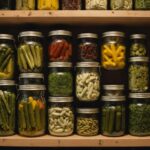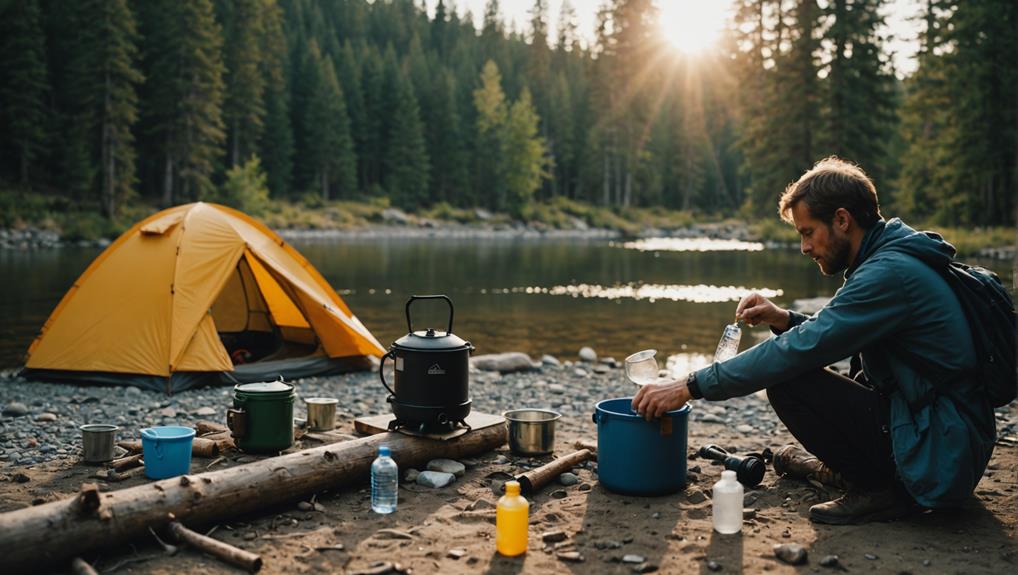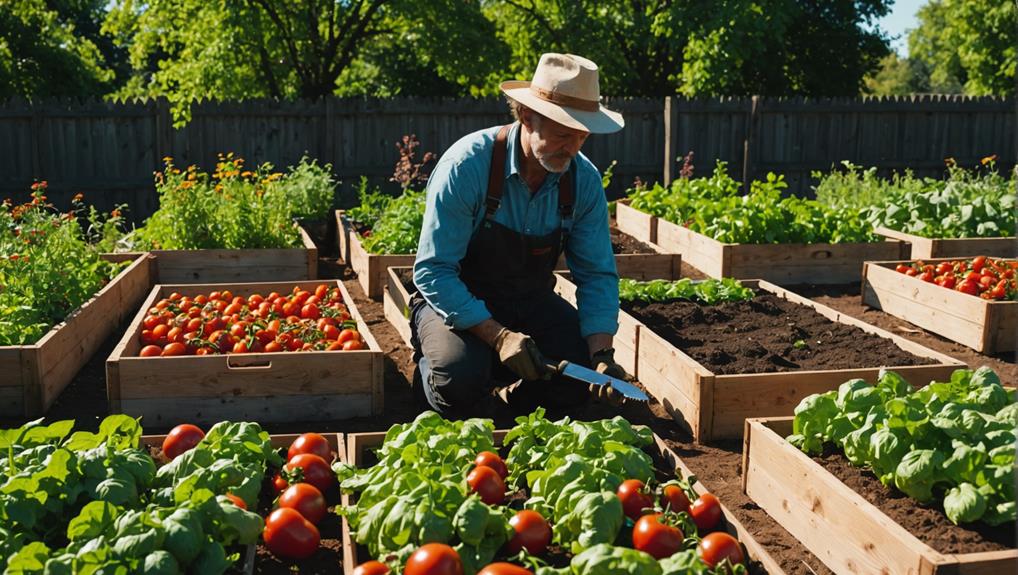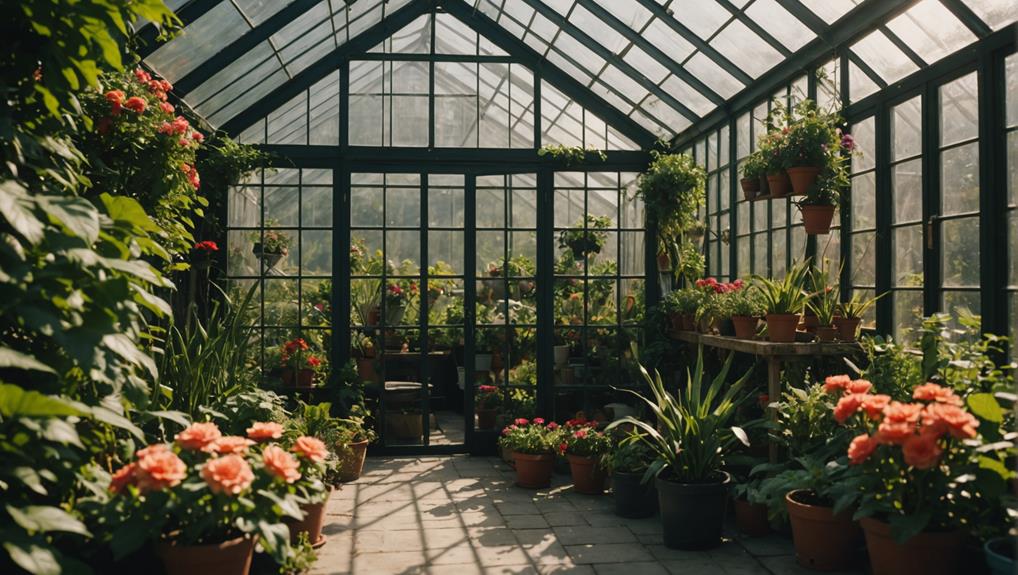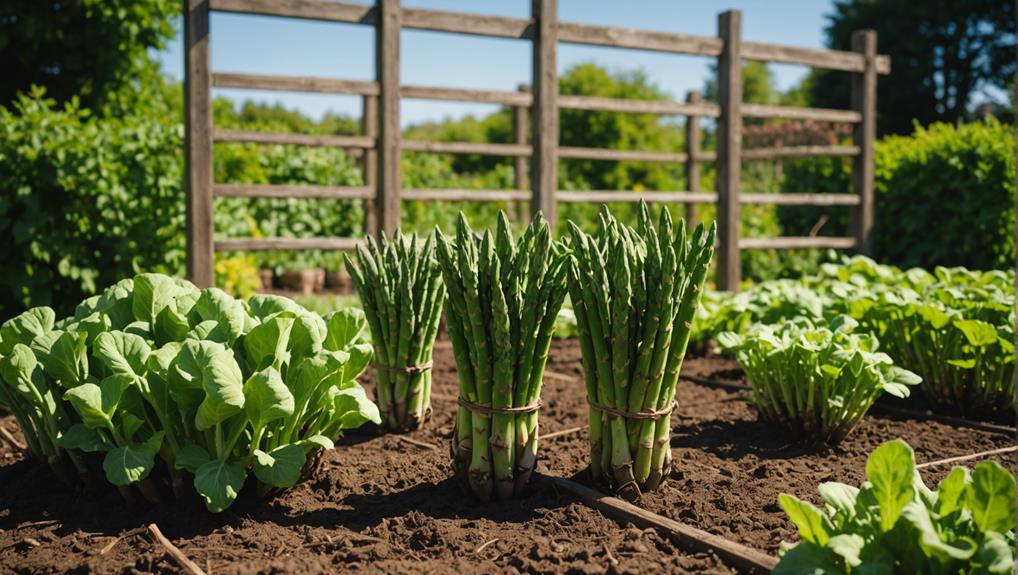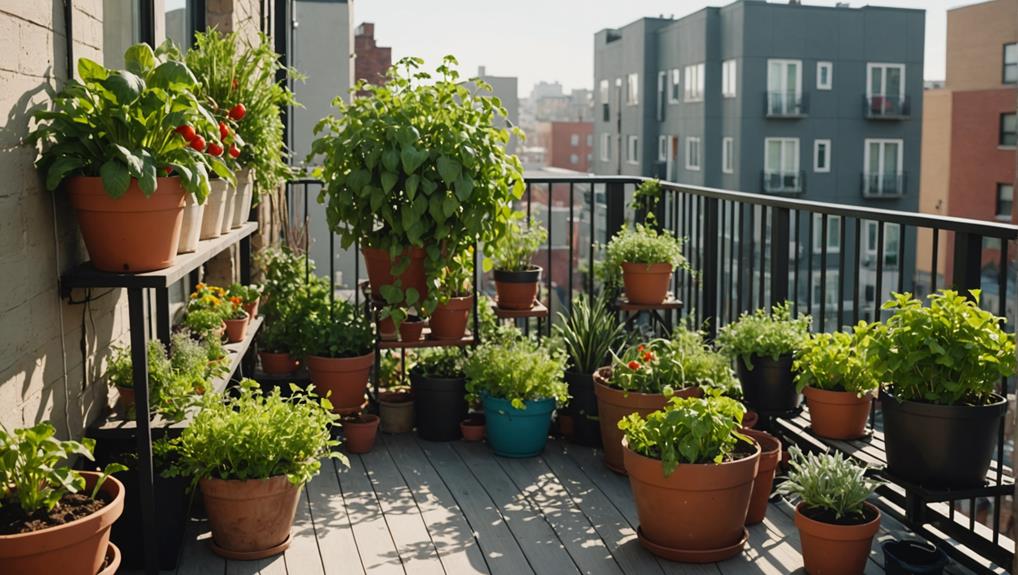As an Amazon Associate I earn from qualifying purchases.
In emergency situations, ensuring you have access to clean water is essential for your health and well-being. You might wonder where to start and which methods are most effective. Boiling water, filtering it, and using chemicals like unscented bleach or iodine tablets are all valuable techniques. However, each method has its own set of steps and considerations. For instance, did you know that boiling water at higher altitudes requires more time? And what about using solar disinfection? Understanding these techniques can be the difference between safety and risk. Let's explore these methods in detail to prepare you for any emergency.
Importance of Water Purification
In emergency situations, ensuring safe drinking water is essential for survival, as the human body can only last about three days without it. Contaminated water poses severe health risks, including waterborne diseases like cholera and dysentery. When natural disasters such as hurricanes and floods strike, regular water services are often disrupted, increasing the likelihood of contamination from pathogens and chemical pollutants. Consequently, mastering water purification techniques becomes vital.
To safeguard your health, you need to understand the importance of water purification. Methods like chemical disinfection, using chlorine or iodine, can effectively eliminate harmful microorganisms. Water filters, particularly those designed for emergencies, can remove larger pathogens and particles, ensuring safer consumption. While boiling water is a common method, other disinfection techniques might be necessary when fuel or heat sources are unavailable.
Awareness of local water contaminants and the proper purification methods will greatly enhance your preparedness during emergencies. By ensuring your emergency water supply is clean, you're protecting yourself and your family from the debilitating effects of waterborne diseases. Remember, in any crisis, having the knowledge and tools to purify water is a critical step towards survival.
Boiling Water
When it comes to ensuring your water is safe to drink, boiling is one of the most reliable methods.
First, you'll want to pre-filter cloudy water using a clean cloth or coffee filter to remove visible dirt and sediment. Once that's done, bring the water to a rolling boil for at least one minute to kill pathogens like bacteria, viruses, and protozoa. If you're above 5,000 feet in altitude, extend the boiling time to three minutes due to lower boiling temperatures.
After boiling, allow the water to cool before storing it in a clean container with a cover to prevent recontamination.
If the boiled water tastes flat or unappealing, you can improve the taste by aerating it—pour it between two clean containers—or add a pinch of salt per liter.
Filtration Methods
Filtration methods offer a practical way to remove harmful bacteria and protozoa from your water supply during emergencies. Portable filters with a pore size of 1 micron or smaller are especially effective at filtering out common pathogens like Giardia and Cryptosporidium. When choosing a filter, verify that it can handle the specific contaminants in your water source.
Household filters vary in effectiveness, so check product labels to confirm they meet your needs. While sand and gravel filtration can serve as a basic method, you'll often need further disinfection to eliminate viruses and other remaining pathogens. Activated carbon filters can improve taste and odor but aren't reliable for removing all microorganisms.
Regular maintenance and timely replacement of filter cartridges are vital for maintaining water safety. Here's a quick comparison:
| Filtration Method | Key Features |
|---|---|
| Portable Filters | Removes bacteria and protozoa, use with caution for viruses |
| Sand and Gravel Filtration | Basic method, often needs additional disinfection |
| Activated Carbon Filters | Improves taste and odor, may require complementary disinfection |
| Household Water Filters | Varies widely, check labels for effectiveness |
Chemical Disinfection
While filtration methods are effective for removing many contaminants, chemical disinfection guarantees that any remaining pathogens are killed. In an emergency, you can use chlorine, iodine, or water purification tablets to disinfect your water. Each method requires precise dosages and wait times to be effective.
For chlorine, use unscented bleach containing 5%-9% sodium hypochlorite. Add 6 drops of bleach per gallon of water. If the water is cloudy or cold, double the dosage to 12 drops per gallon. Let the water stand for at least 30 minutes before drinking. Always check the concentration of your bleach and follow the instructions carefully to ascertain proper disinfection.
Iodine tablets are another option. Use 5 drops of iodine per quart of clear water, or 10 drops for cloudy water. Allow it to sit for a minimum of 30 minutes to ascertain thorough disinfection.
Be aware, both chlorine and iodine may alter the taste and odor of your water. If the taste is too strong, aerate the water by pouring it between two clean containers.
Solar Disinfection
In emergency situations, you can effectively purify water using Solar Disinfection (SODIS) by exposing clear plastic bottles filled with water to direct sunlight for at least 6 hours. This method relies on UV rays to disinfect harmful microorganisms, making the water safe to drink.
If you're dealing with cloudy water, pre-filtering is essential. Turbidity can greatly reduce the effectiveness of solar disinfection, so make sure the water is as clear as possible for ideal results.
You can enhance the process by placing the bottles on dark surfaces, which absorb heat and increase the water temperature, further improving disinfection rates.
During overcast conditions, leave the bottles in sunlight for up to 2 days to guarantee adequate disinfection.
SODIS is a low-cost method that doesn't require special equipment or chemicals, making it particularly useful in emergency situations or areas with limited clean water access.
Conclusion
In emergency situations, purifying water is crucial to stay safe and healthy.
You can boil water for at least a minute, use portable filters, or disinfect with bleach or iodine tablets.
Solar disinfection is also a viable option when you've got clear bottles and plenty of sunlight.
Always remember to pre-filter cloudy water.
By following these essential techniques, you'll guarantee your water is safe to drink, keeping you and your loved ones out of harm's way.
As an Amazon Associate I earn from qualifying purchases.





